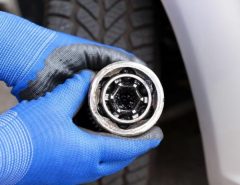The automobile industry relies heavily on quality parts for thousands of different components that make up the complete finished product. Some of these essential parts will be for cosmetics or convenience but many are vital to the vehicle’s safety. Therefore, automobile manufacturers cannot cut corners when it comes to the parts they choose.
Rubber and plastic remain the most heavily utilised materials for such components. To list all of these parts would take a long time but here are just a few examples:
- Steering wheels
- Bumpers
- Headlights
- Engine grills
- Doors
- Buttons and switches
- Knobs and handles
- Seats
- Window and door seals
Choosing the right material for automobile parts is important as there are considerations about weight reduction which improves fuel efficiency. A material must be strong and reliable but not excessively heavy. Metal has more weight and so increasingly parts are being replaced with materials like lightweight plastics and rubber.
Considerations for the right material also need to include how they bear up under intense thermal and mechanical pressures. This is paramount for assuring drivers of their safety whilst driving a vehicle. A vehicle could be used in sub zero temperatures or in the desert. Add to that the many times it must switch from acceleration to deceleration quickly and you begin to see just how robust these parts need to be. Every single part must be able to function perfectly, with seals and gaskets able to keep gases and liquids exactly where they should be.
As well as function and safety, parts must also fit in with the overall design of a vehicle – it should look good and desirable. It’s not just about looking great though as they also play an important role in reducing the noise of the mechanics of the vehicle, improving the driver and passenger experience, for example.
For plastic components, methods of production include injection moulding. Materials can be adjusted to provide just the right level of strength and durability for the required end result. Rubber can also be moulded into a virtually endless variety of shapes and density, depending on the desired qualities. Find out more about UK Rubber Moulding at a site like meadex.co.uk
Other methods include extrusion of both plastic and rubber materials which also results in a bespoke density and thickness depending on the proposed use. Precision die cutting is a further method used for the production of components which involves splicing, punching or tooling for parts such as bumpers, housings and gaskets, for example.
As you can see, the automobile industry does rely heavily on plastics and rubber for the manufacture of a huge range of vehicles. That is because at the moment there are no other substitute materials that offer the same beneficial qualities as plastic and rubber. Increasingly, parts that were once made from metal are being replaced with these lightweight and durable materials.






Leave a Reply